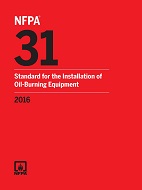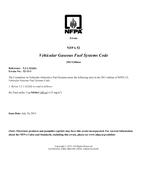Click here to purchase
NFPA 58: Liquefied Petroleum Gas Code provides minimum safety requirements for all liquefied petroleum gas (propane) installations, from small cylinders installed at residences to large bulk storage facilities that can exceed 100,000 gallons.
The code includes minimum requirements for safe handling during LP gas transfer, including operator qualifications, maximum filling quantity in containers, and pre-transfer inspections to ensure containers are fit for continued service.
This edition of NFPA 58 features some important changes, including:
- Bulk plant and industrial plant definitions have been updated to clearly identify storage threshold at greater than 4,000 gallons water capacity.
- Container appurtenance requirements have been harmonized at 4,000 and less/greater than 4,000 gallons water capacity to better reflect container usage in the field.
- Container and valves often must be protected from vehicular impact. A new definition has been added along with extensive annex material to describe vehicular barrier protection.
- New requirements specify which personnel must be trained and in what topics.
- Requirements have been added for tank heaters and updated for vaporizers.
- Requirements have been added regarding corrosion protection for some underground piping systems.
NFPA 58 also covers a number of safety requirements related to:
- Container construction
- Piping design
- Separation of containers from homes, stores, schools and other important buildings
- Safe handling of liquefied petroleum gas during transfer between containers
Product Details
- Published:
- 08/24/2016
- ISBN(s):
- 9781455913879
- Number of Pages:
- 170


